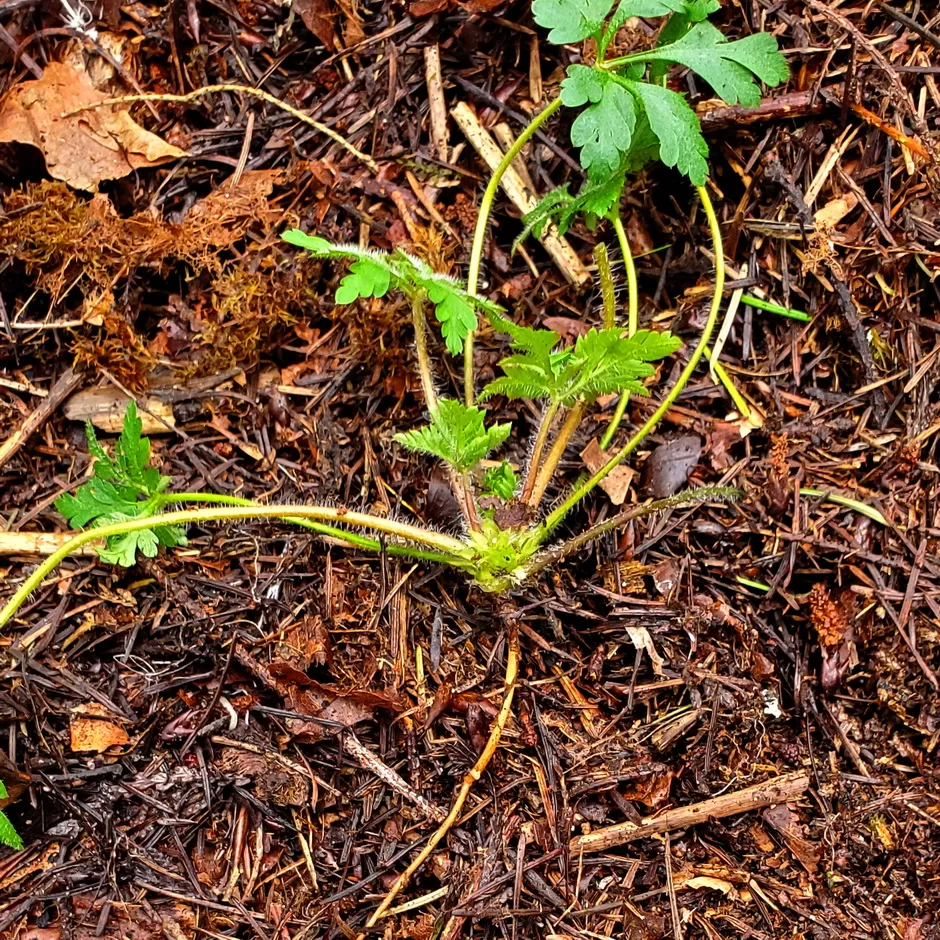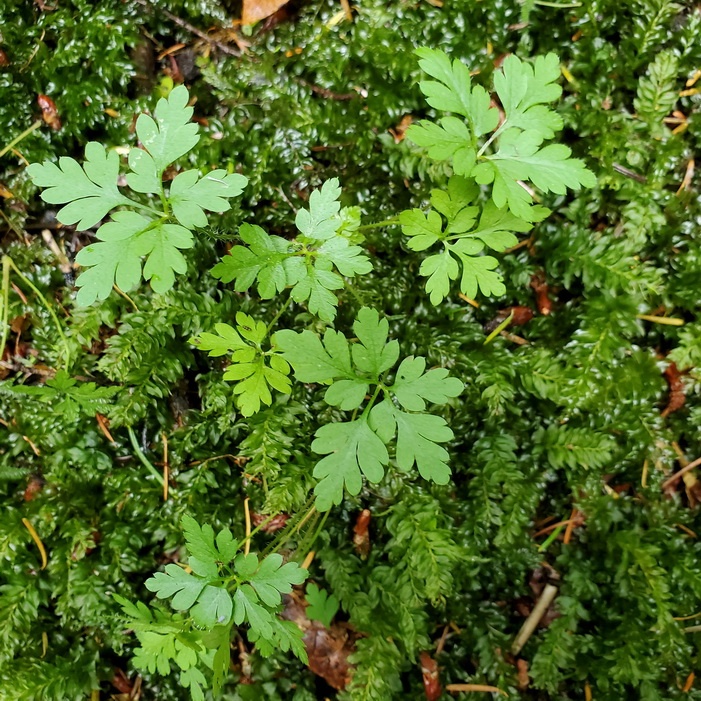From late Winter through early Spring, I like to exploit the weaknesses of Herb Robert by removing those that sprouted during last year’s growing season, survived the winter, and are poised to flower when the weather turns warm.
First Weakness – Easy to Spot in Late Winter and Early Spring
During this season, the overwintering Herb Robert stands out conspicuously from the browns of last year’s plant debris, especially before it is camouflaged by the new growth of Pacific Bleeding Heart and Western Sweet Cicely. Even amidst perennial groundcovers, like Oregon Grape and Salal, the texture of its leaves and the compact shape of its rosette make it easy to spot.
Second Weakness – The Button
My mantra for removing Herb Robert, “get the button, Bob,” hints at its biggest weakness, the basal node where all of the leaf stems come together. The “button” is easy to spot. Simply push the weed onto its side with a sweep of the fingertips, and the bright, yellow-green button stands out. Furthermore, this button provides an excellent handle by which to grip and remove the plant.

Third Weakness – Also The Button
I believe that getting the button suffices to kill the plant, even if roots are left in the ground. The button connects to a short length of tap root, ending in a second node of sorts from which emerge a multitude of long, thin roots. I did an experiment in which I planted eight Herb Robert roots that lacked their buttons in a container of potting soil. None of them resprouted, which gives me some confidence that “getting the button” does indeed kill the plant.

Class B Noxious Weed
Herb Robert has been on the State of Washington’s Class B list of noxious weeds since 1998. It’s not the biggest threat to our backyard forests, but a weed worth tackling after the Ivy is off of the trees, Bradley Lines have been established, and higher priority invasive plants (like Holly, Laurel, and Himalayan Blackberry) are under control.
The Lighter Side of Herb Robert
I recommend the brief and entertaining article in Wikipedia on Herb Robert (Geranium robertianum). Many call it “stinky Bob,” but that’s a little disrespectful even if it does smell like “burning tires.” The article suggests it may have “escaped cultivation?” I can’t imagine anyone wanting to grow it on purpose despite its apparent uses in some folk medicines. I would have to be quite desperate before I tried rubbing its leaves on my face to repel mosquitoes or eating a handful to treat digestive issues.
